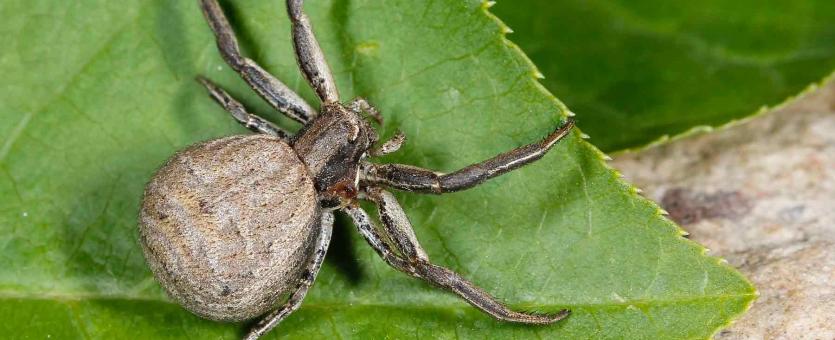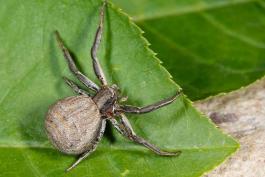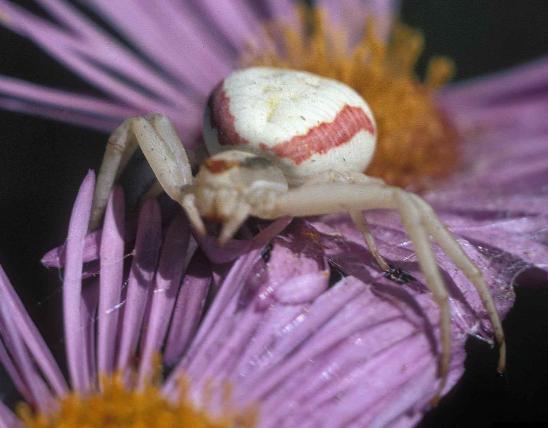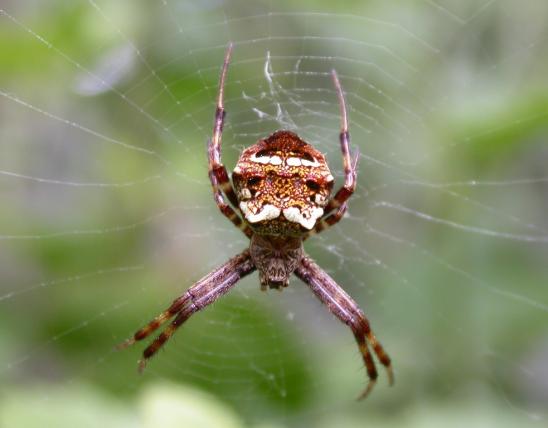
All crab spiders generally resemble crabs: Their legs extend outward from the sides, and they can walk in any direction. There are several species of crab spiders in the genus Xysticus in Missouri; as a group they are called ground crab spiders. Generally larger than flower crab spiders, they are usually dull gray and brown and have brown, rusty, tan, white, or yellow markings, especially on the abdomen, and they often have a midstripe on top of the carapace (head). The first pair of legs are large and powerful, as in flower crab spiders, and are covered with many tiny spines. To be certain of your identification of this genus, you must scrutinize details of the spider's eyes and legs and gauge the flatness of the carapace compared to that of similar spiders.
Similar species: In addition to genus Xysticus, there are approximately 9 other genera of crab spiders (in the family Thomisidae) in North America. Altogether, the family includes some 130 species in North America.
Length (not including legs): from ¼ to ⅜ inch (females); males about ⅛ inch.

Statewide.
Habitat and Conservation
Aptly called ground crab spiders, members of the genus Xysticus can be found under bark as well as on the forest floor under leaves, rocks, and on decaying logs. You can sometimes find them on low fence posts, flowering plants, and outbuildings. Woodland crab spiders are not easily seen because of their cryptic coloration but nevertheless are fairly common.
Food
Insects and other spiders make up the bulk of their prey. Crab spiders capture prey by sitting and waiting for an insect or other spider to pass by. Then, they simply grab and bite it.
Life Cycle
As a general rule, spiders in our area hatch from eggs in spring and spend the growing season eating, maturing, mating, and laying eggs. Females continue creating egg cases as long as the weather holds out. As temperatures cool in fall, their metabolism slows, and they generally die when it freezes. Egg cases overwinter, and spiderlings hatch in spring.
Human Connections
It would be easy to dismiss the importance of these tiny predators, but when you consider the many insects whose numbers they help control, you become thankful for these natural, nontoxic pest exterminators.
Ecosystem Connections
Spiders help to control populations of the insects they capture. Being small themselves, they easily fall prey to larger predators such as birds, reptiles, and mammals. Many animals eat their eggs. Many birds forage on tree bark for species such as this.





























